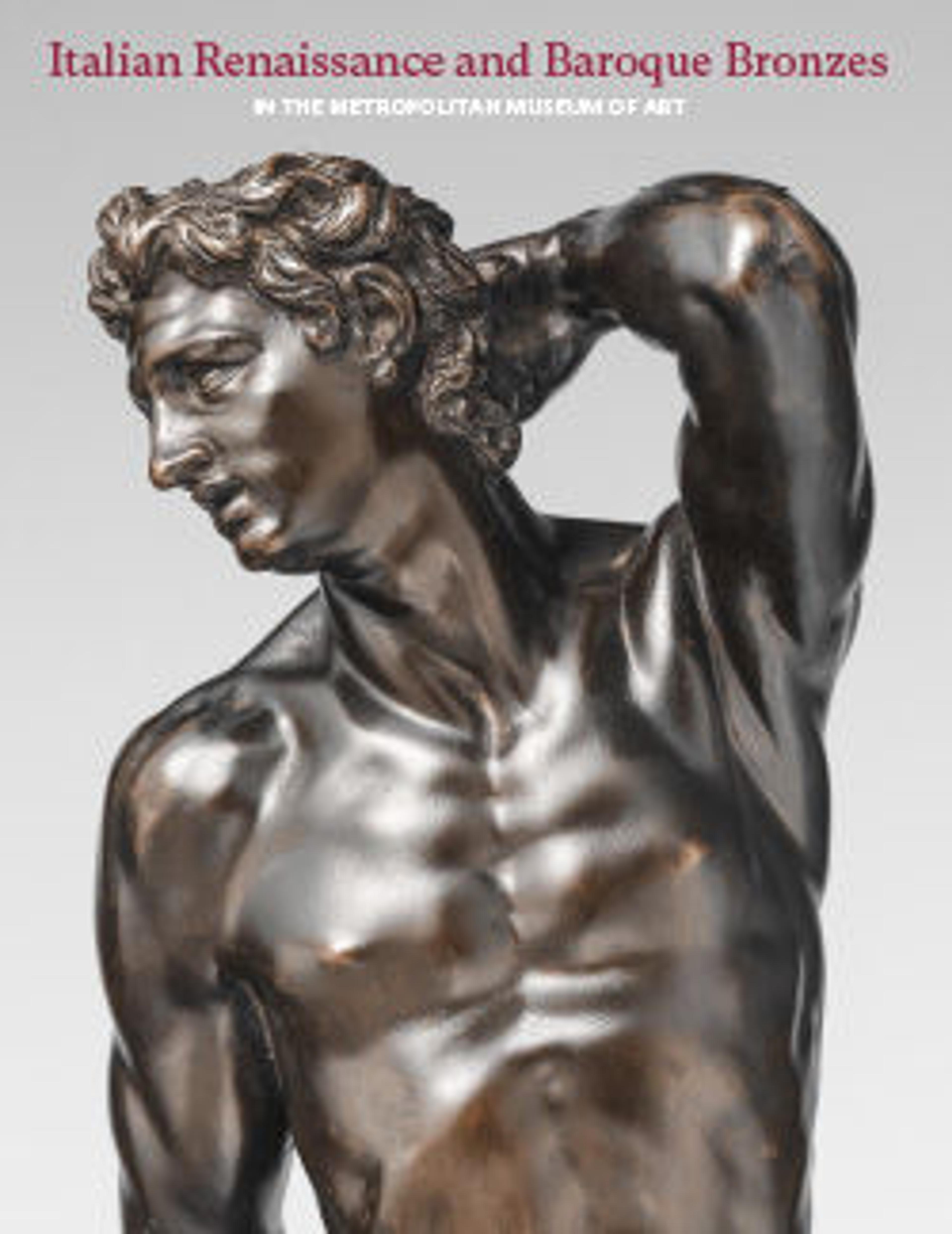Hercules and Antaeus
The group freely copies an ancient marble much admired in the Renaissance, now in the Palazzo Pitti, Florence, which arrived from the Vatican Belvedere as a gift from Pius IV to the Medici. The head and right arm of Antaeus and the legs of both giants were then missing.[1] Until restorations were carried out, artists felt free to reconstruct the group according to their own fancy. A disastrous innovation on the part of our bronzista was to position Antaeus’s hands around his genitals, a gesture at odds with the Renaissance veneration of classical antiquity.
The technique of this solid cast investigates the hardy, rudimentary methods of the Florentine quattrocento but in an all-too-knowing manner. There is relentless but uninformed hammering all over. The ends of sprues are left unfiled for added “texture.” Sharp creases delineate some of the flesh folds, but the metal has not been chased away cleanly from adjoining areas, such as that between the back of the sagging Antaeus and the top of Hercules’s right shoulder. The consignor of the bronze to Sotheby’s apparently had a certificate from Leo Planiscig, proposing a wrong attribution to Francesco da Sant’Agata.
-JDD
Footnotes
(For key to shortened references see bibliography in Allen, Italian Renaissance and Baroque Bronzes in The Metropolitan Museum of Art. NY: The Metropolitan Museum of Art, 2022.)
1. Haskell and Penny 1981, pp. 232–34.
The technique of this solid cast investigates the hardy, rudimentary methods of the Florentine quattrocento but in an all-too-knowing manner. There is relentless but uninformed hammering all over. The ends of sprues are left unfiled for added “texture.” Sharp creases delineate some of the flesh folds, but the metal has not been chased away cleanly from adjoining areas, such as that between the back of the sagging Antaeus and the top of Hercules’s right shoulder. The consignor of the bronze to Sotheby’s apparently had a certificate from Leo Planiscig, proposing a wrong attribution to Francesco da Sant’Agata.
-JDD
Footnotes
(For key to shortened references see bibliography in Allen, Italian Renaissance and Baroque Bronzes in The Metropolitan Museum of Art. NY: The Metropolitan Museum of Art, 2022.)
1. Haskell and Penny 1981, pp. 232–34.
Artwork Details
- Title: Hercules and Antaeus
- Date: probably 19th century
- Culture: possibly Italian
- Medium: Bronze, with red-brown natural patina, and remains of dark brown lacquer.
- Dimensions: Height: 11 1/4 in. (28.6 cm)
- Classification: Sculpture-Bronze
- Credit Line: The Jack and Belle Linsky Collection, 1982
- Object Number: 1982.60.98
- Curatorial Department: European Sculpture and Decorative Arts
More Artwork
Research Resources
The Met provides unparalleled resources for research and welcomes an international community of students and scholars. The Met's Open Access API is where creators and researchers can connect to the The Met collection. Open Access data and public domain images are available for unrestricted commercial and noncommercial use without permission or fee.
To request images under copyright and other restrictions, please use this Image Request form.
Feedback
We continue to research and examine historical and cultural context for objects in The Met collection. If you have comments or questions about this object record, please contact us using the form below. The Museum looks forward to receiving your comments.
